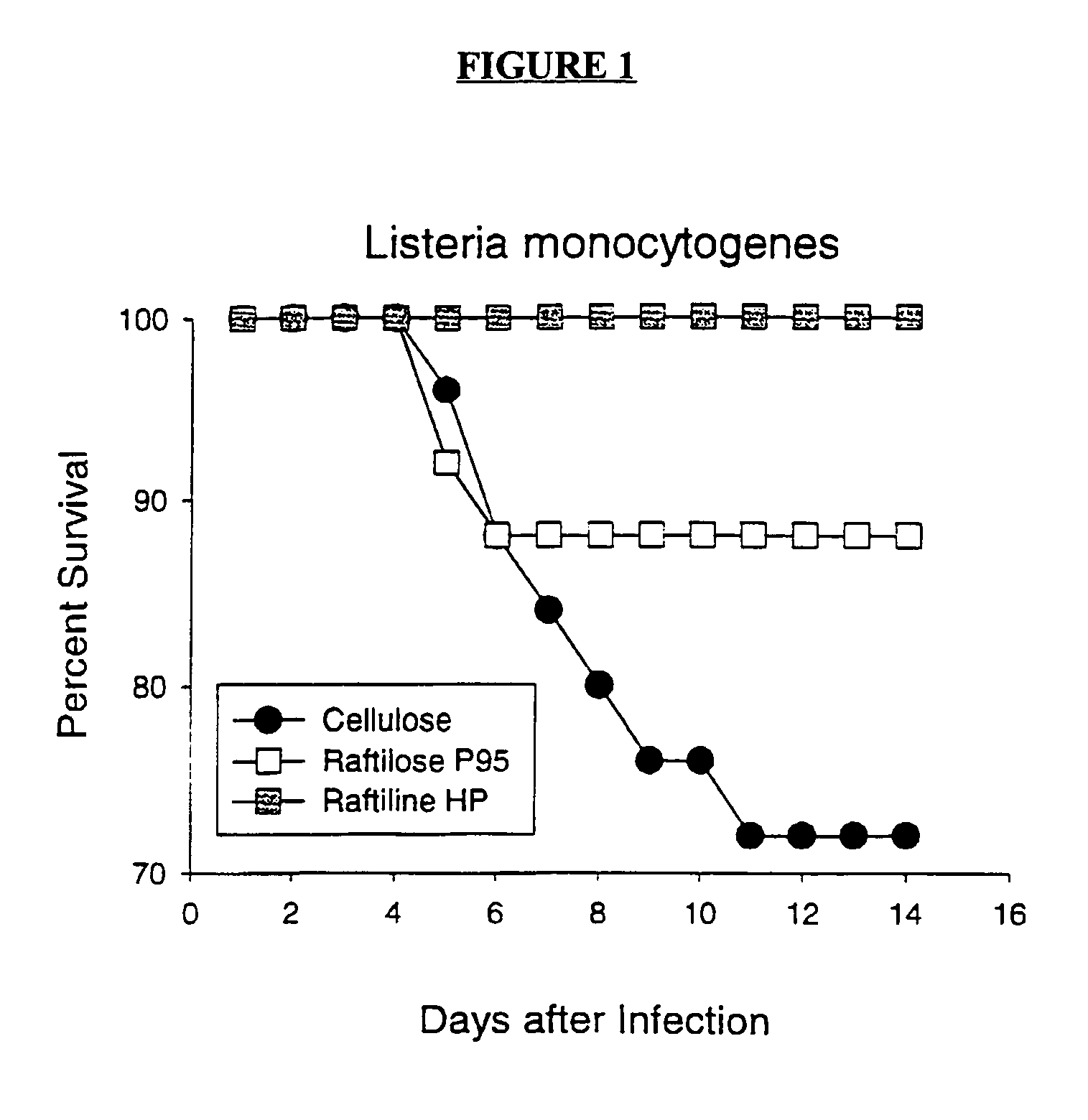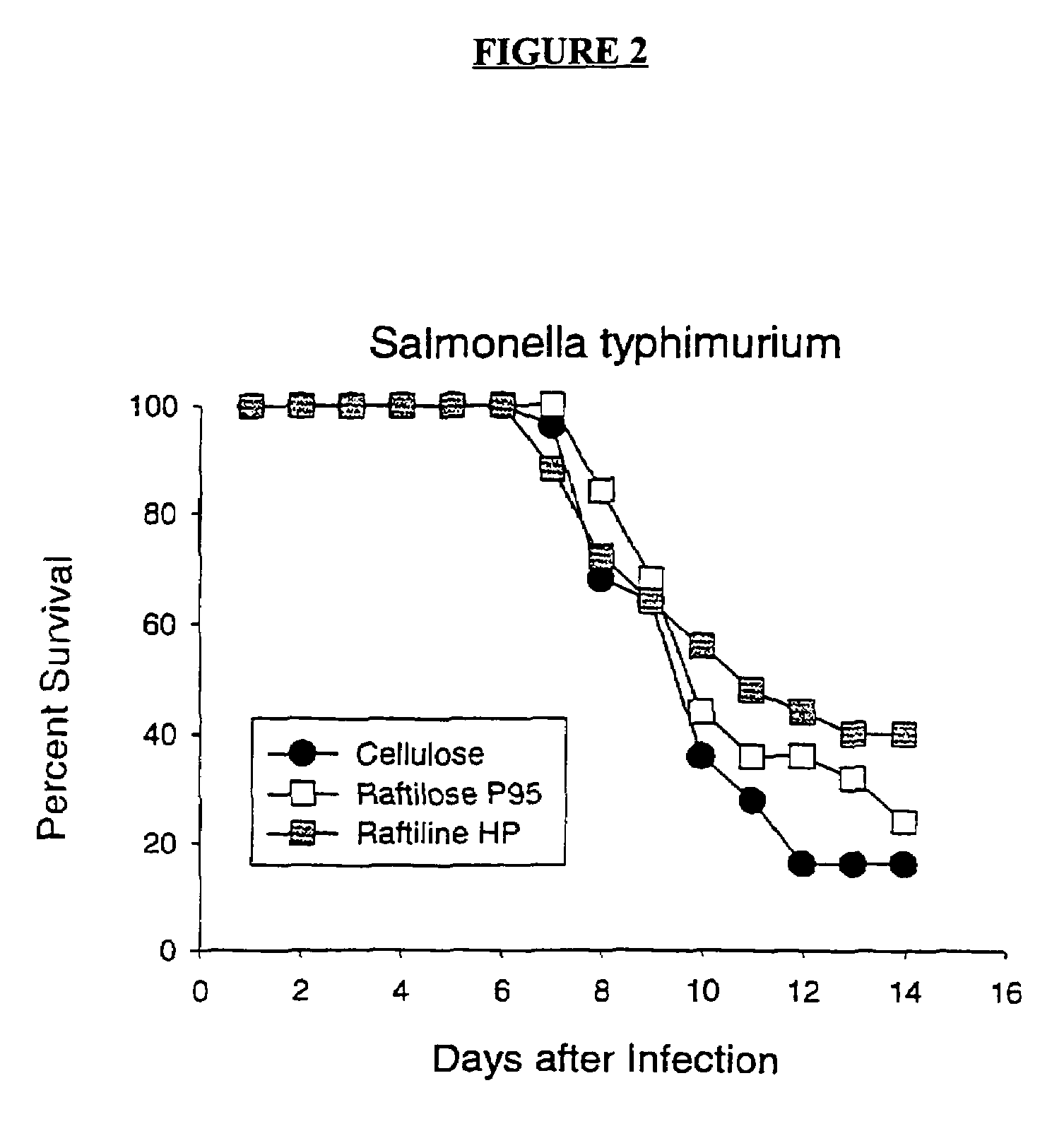Inhibition of systemic infections in humans and vertebrates by dietary fibers
a technology of dietary fiber and systemic infections, which is applied in the direction of antibacterial agents, biocide, plant/algae/fungi/lichens, etc., can solve the problems of increased risk of bacteria translocation, subsequent sepsis in the host, and the disruption of the normal flora of gastro-intestinal bacterial flora, which is a detriment of antibiotic treatment, and achieves the effect of improving the ratio of beneficial/pathogenic bacteria
- Summary
- Abstract
- Description
- Claims
- Application Information
AI Technical Summary
Benefits of technology
Problems solved by technology
Method used
Image
Examples
example 1
[0035]Example 1 relates to a systemic infection caused by Listeria monocytogenes, a typical pathogenic bacteria species of the Listeria family which may cause a disorder named listeriosis. In most serious cases, the manifestations of listeriosis include septicemia, meningitis (or meningoencephalitis), encephalitis and intrauterine or cervical infections in pregnant woman, which may result in spontaneous abortion or stillbirth. The onset of said disorders is usually preceded by influenza-like symptoms, including headache and persistent fever. Furthermore, gastro-intestinal disorder symptoms such as nausea, vomiting and diarrhoea may precede serious forms of listeriosis or may be the only symptoms expressed.
[0036]Listeriosis is clinically defined when the organism, Listeria monocytogenes, is isolated from blood, cerebrospinal fluid, or an otherwise normally sterile site such as, e.g., the placenta. Listeria monocytogenes may invade the gastro-intestinal epithelium. Once the bacterium ...
example 2
[0043]Example 2 relates to a systemic infection in mice caused by Salmonella typhimurium.
[0044]Many species of Salmonella exist, several of which cause foodborne illness. Salmonella typhimurium has been the species that accounts for most foodborne illnesses related to Salmonella bacteria. Recently another species, Salmonella enteritidis, has been associated with foodborne diseases resulting from consumption of contaminated undercooked eggs.
[0045]Disease is caused by the penetration and passage of Salmonella bacteria from gut lumen into epithelium of the small intestine where inflammation occurs.
Culture of Salmonella typhimurium
[0046]Salmonella typhimurium (ATCC strain 14024) were passaged three times in B6F3F1 mice to assure virulence. Each time, Salmonella typhimurium were cultivated from the spleens of dead mice. The resulting virulent strain was used as the representative bacterial pathogen. The virulent Salmonella typhimurium were grown on blood agar plates at 37° C. for 24 ho...
PUM
| Property | Measurement | Unit |
|---|---|---|
| optical density | aaaaa | aaaaa |
| degree of polymerization | aaaaa | aaaaa |
| concentrations | aaaaa | aaaaa |
Abstract
Description
Claims
Application Information
 Login to View More
Login to View More - R&D
- Intellectual Property
- Life Sciences
- Materials
- Tech Scout
- Unparalleled Data Quality
- Higher Quality Content
- 60% Fewer Hallucinations
Browse by: Latest US Patents, China's latest patents, Technical Efficacy Thesaurus, Application Domain, Technology Topic, Popular Technical Reports.
© 2025 PatSnap. All rights reserved.Legal|Privacy policy|Modern Slavery Act Transparency Statement|Sitemap|About US| Contact US: help@patsnap.com


